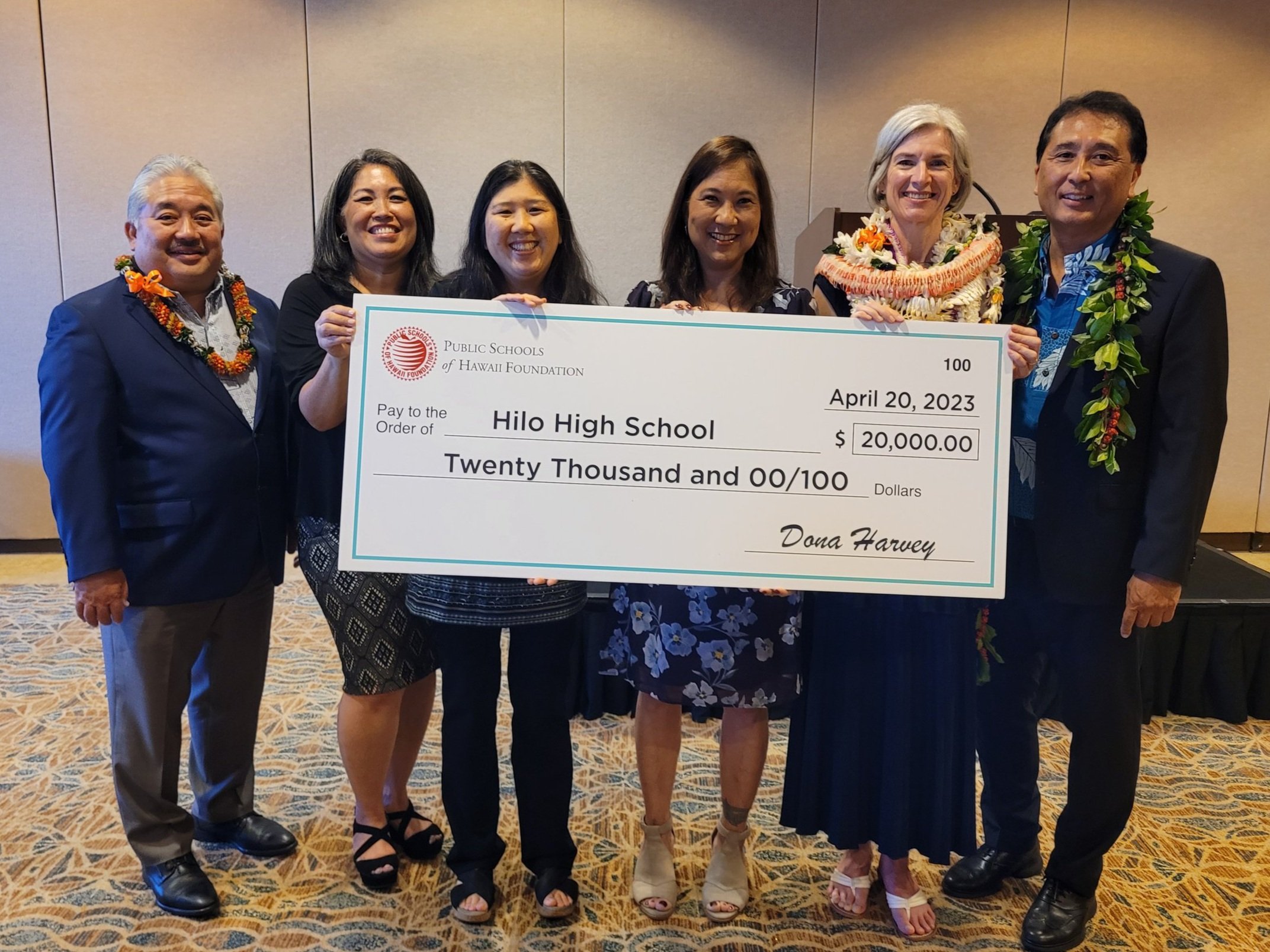Growing the network
The ʻĀina-Informatics Network expanded over the Spring through mobile lab deployments at 15 schools, welcoming 11 new teachers to the network and 4 new schools. With support from the Hawaiʻi Academy of Science, we also forged new connections with teachers from American Sāmoa, who visited our lab in January with students participating in JSHS. Talofa lava!
Teachers and students from Tutuila, American Sāmoa participated in a mini-training at ʻIolani School while on island for the Junior Science and Humanities Symposium.
AP Biology students from Roosevelt High School - new to our network in 2023 - load an agarose gel.
The ʻĀina-Informatics Network is also honored to have formalized collaborations with the Hawaiʻi Science and Technology Museum on Hawaiʻi Island and STEMworks Hawaiʻi on Maui as new neighbor island community partners this Spring.
Research highlights
A major push this semester for our network was the development of robust protocols optimized for eDNA sequencing of stream water in order to detect rare native species not typically observed in catch surveys. In collaboration with ‘Iolani School's Pa‘ēpa‘ē o Waikolu stream biodiversity monitoring network, AIN began pairing eDNA surveys with catch data in an effort to understand which fish, decapod and arthropod species are most likely to be counted (or not) using each method. A custom bioinformatics pipeline designed to automate clustering and classification of stream eDNA sequences was also developed to produce easy-to-interpret results summaries for each site.
Comparison of fish data generated by University Lab School students using catch vs. eDNA surveys at Ka Papa Lo‘i ‘o Kānewai on May 3. Native fish species in red.
Our Haku Inoa naming campaign for novel lava cave bacterial genomes newly described by ʻĀina-Informatics Network schools is still underway! In addition to three species previously sequenced and named by students, including Paraflavitalea speifideiaquila, we are currently seeking scientific name submissions for five additional novel species. Visit our Lava Cave Microbial Biodiversity Project site to learn more about this collaborative effort between AIN, the University of Hawaiʻi at Mānoa (Drs. Stuart Donachie and Rebecca Prescott), NASA’s Johnson Space Center and the Los Alamos National Laboratory.
Student independent research
AIN also supported several student independent projects this year at various network schools, all of which advanced to the State round. At Kaua‘i High School, two student teams made use of our mobile sequencing lab to analyze eDNA isolated from water sampled from ‘Alekoko Fishpond. The goal of these projects was to characterize phytoplankton and fish populations in the loko i‘a as a baseline survey to support the community's ongoing biocultural restoration efforts.
Kauaʻi High School science fair entry utilizing eDNA techniques and bioinformatics pipelines developed by ʻĀina-Informatics this year.
At ‘Aiea High School, a student team conducted 16S sequencing of microbial communities in Hālawa Stream at locations above and below the discharge point of treated Red Hill water in search of bacterial bioindicators of environmental impacts. Another student at ʻAiea High School explored genetic methods to classify Wolbachia strain types in local mosquito populations with the support of AIN primers and reagents. Hawaiʻi Preparatory Academy entered multiple student submissions to their district fair for the first time in recent years (also advancing to States!), establishing an in-house MinION sequencing lab supported by the ʻĀina-Informatics Network. Hoʻomaikaʻi to all of our haumāna who participated in science fairs this year!
Teacher professional development
The four teachers from the second cohort of our ʻĀina-Informatics Teacher Fellows program all made significant progress in their classroom implementation of new genome science projects co-developed with AIN instructors.
Johanna Anton (Hawaiʻi Preparatory Academy) - Loading a MinION sequencer as part of multiple soil and plant root microbiome projects
Amber O’Reilly (Kahuku High School) - Characterizing bacterial community composition in sediments at Loko Ea Fishpond using 16S sequencing
Daniella Griffay (Radford High School) - Extracting DNA from water samples to investigate bacterial nutrient cycling in an axolotl tank
Susan Rickards (Parker School) - Genetic barcoding and identification of deep sea cephalopods. Seen here unboxing new lab equipment supported by AIN!!
AIN also hosted teacher workshops this Spring on Maui in March and at the Hawaiʻi STEM Conference in Honolulu in May. Our upcoming second annual Kula Aʻo Kālaiōewe Summer Genomics Intensive will be taking place June 8-10 at ʻIolani School with 18 confirmed participants, and registration is still open for our 3-hour mini-workshop for teachers as part of the STEMS2 Symposium. E hele mai!
Participants practice pipetting drills at our Maui teacher workshop hosted at Hawaiʻi STEMworks in Kīhei.
Kūlia i ka Nuʻu
This year’s Public Schools of Hawaiʻi Foundation (PSHF) Awards Banquet brought many AIN teachers and students together for an intimate reception with 2020 Nobel Laureate in Chemistry, Dr. Jennifer Doudna. Known for her contributions to the discovery of CRISPR gene editing technology, Dr. Doudna is also a distinguished graduate of Hilo High School, where her foundation joined PSHF in awarding a total of $20,000 in equipment grants and STEM scholarships. It was an honor for the ʻĀina-Informatics Network to be featured as a leading initiative providing the access and expertise needed to inspire the next generation of homegrown luminaries in STEM innovation.
Mary Margaret Peterson, Alyssa Bailey and their students (ʻAiea High School) with Dr. Doudna at the PSHF Awards Banquet.
Dr. Doudna presents a check from the Public Schools of Hawai‘i Foundation to her alma mater and AIN partner school, Hilo High School.













